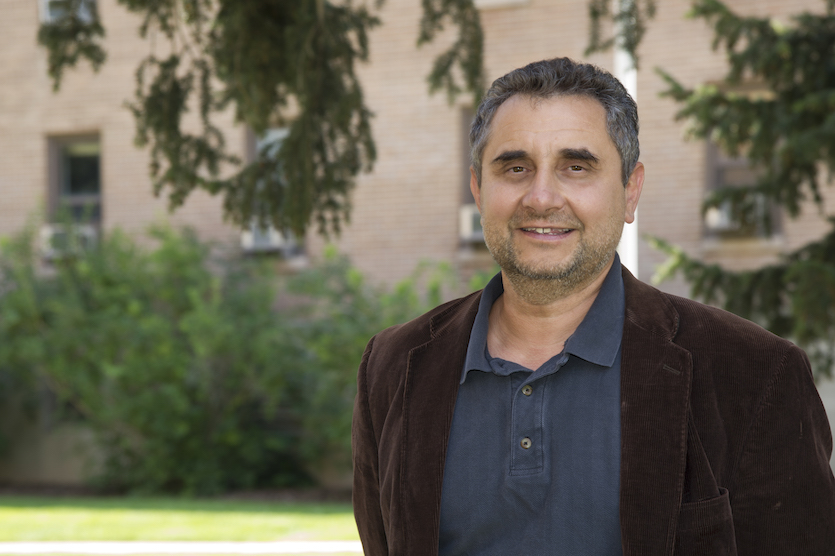ISU physics Professor Ed Tatar working on mega-science neutrino experiment; groundbreaking set July 21
July 19, 2017

POCATELLO – Idaho State University physics Professor Ed Tatar and his students are participating in a global mega-science experiment involving 1,000 other researchers from 30 countries who are studying neutrinos, which are subatomic particles with most unusual properties.
This new era of physics in the United States will officially begin at 2 p.m. July 21 at a groundbreaking ceremony for the Deep Underground Neutrino Experiment, or DUNE, that will be held simultaneously at the Sanford Lab in South Dakota and at the Fermilab, near Chicago, Illinois. Tatar plans to participate in the groundbreaking ceremony in South Dakota, joining a group of world known scientists.
Even though they are probably the most abundant particles in the Universe, neutrinos almost never interact with ordinary matter, Tatar said. The neutrino masses are so small that nobody so far has been able to measure them. By studying the properties of the neutrinos, the ISU team, along with other researchers, will search for phenomena beyond the Standard Model of Physics.
A beam of neutrino particles generated at Fermilab, near Chicago, Illinois, will travel 800 miles underground to a mile-deep detector system filled with liquid argon, in South Dakota. DUNE will allow scientists to investigate a mysterious phenomenon called “flavor oscillation,” so far observed only in neutrinos. They will search for subtle differences in properties of ordinary matter and antimatter. This could provide clues as to why we live in a matter-dominated universe – in other words, why we are all here, instead of our universe having been annihilated just after the Big Bang, Tatar said.
The experiment will also watch for neutrinos produced in supernova explosions, leading to the formation of neutron stars, or even black holes. The large DUNE detectors will allow scientists to look for the predicted but never observed subatomic phenomenon of proton decay, a process closely tied to the development of a unified theory of space, energy and matter.
DUNE construction will be continued over the next decade. The European research center CERN has committed to provide the first prototype of the detector.
Tatar already has three doctoral students working with him on this project. He hopes that this fascinating experiment will attract more students to the ISU programs in science, engineering and mathematics.
“The ISU researchers will work on the design and construction of the particle detectors that will be used at the South Dakota and Illinois facilities,” Tatar said. “We really need more young, ambitious, smart students to work with us on this unique endeavor. It can open so many doors in the future.”
At its peak, the construction for this project is expected to create almost 2,000 jobs in South Dakota and a similar number of jobs in Illinois.
The DUNE research project is funded by the U.S. Department of Energy Office of Science in conjunction with CERN and international partners from nearly 30 countries.
Illustrations and animations of the LBNF/DUNE project and its science goals are available at: http://www.dunescience.org/for-the-media/.
More information about the facility and experiment are at: http://lbnf.fnal.gov or http://dunescience.org
